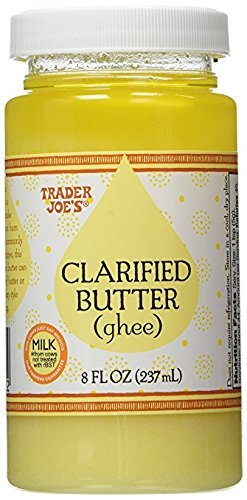
Price: $12.20
(as of Apr 04, 2025 05:37:30 UTC - Details)
What is the Best Butter to Use? A Comprehensive Guide
Introduction
When it comes to cooking and baking, butter is an essential ingredient that can make or break a dish. But with so many options available, you might wonder: what is the best butter to use? Whether you're looking for the best butter for baking, spreading, or cooking, understanding the different types of butter can help you make an informed choice. In this article, we’ll explore various types of butter, their uses, and how to select the best one for your needs.
Understanding Butter Types
1. What is the Best Butter for Baking?
Baking requires precision, and the type of butter you use can affect the texture and flavor of your baked goods. Unsalted butter is often recommended for baking because it allows you to control the amount of salt in your recipe. Many bakers swear by brands like Kerrygold or Plugra, which offer high butterfat content, resulting in richer pastries and cakes.
2. Is Margarine a Good Substitute for Butter?
If you’re looking for a butter alternative, margarine might come to mind. However, many chefs argue that margarine lacks the flavor and richness of real butter. If you must use margarine, opt for a stick form instead of a tub, as it usually contains less water and is closer in texture to butter.
3. What is the Best Butter for Spreading?
For spreading on toast or bread, you want a butter that is soft and easy to spread. Whipped butter is a fantastic choice here because it’s aerated, making it light and fluffy. Brands like Land O’Lakes offer a whipped butter that many find delightful.
4. What is the Best Grass-Fed Butter?
Grass-fed butter has gained popularity for its rich flavor and potential health benefits. It’s made from the milk of cows that have been primarily fed grass, which can result in a higher concentration of omega-3 fatty acids and vitamin K2. Kerrygold is a well-known grass-fed butter brand that many people rave about for its taste and quality.
5. What is the Best Organic Butter?
If you’re concerned about additives and the quality of your ingredients, organic butter is the way to go. Organic butter typically comes from cows that are not treated with antibiotics or growth hormones. Brands like Organic Valley offer certified organic options that are both delicious and responsible.
6. How to Choose the Best Butter for Cooking?
When it comes to cooking, especially at high temperatures, you should consider the smoke point of the butter. Clarified butter or ghee is an excellent choice as it has a higher smoke point and won’t burn as easily as regular butter. This makes it perfect for sautéing and frying.
Nutritional Aspects of Butter
7. Is Butter Healthy?
Butter has been a controversial ingredient in the health community. While it contains saturated fats, some studies suggest that moderate consumption of butter can fit into a balanced diet. It’s rich in vitamins A, D, E, and K, which are essential for overall health. However, it’s important to use butter in moderation and balance it with other healthy fats.
8. What is the Difference Between European and American Butter?
European butter typically has a higher fat content than American butter, making it creamier and richer in flavor. If you’re looking for the best flavor for your baked goods, European butter might be the way to go. Brands like Président are popular choices among bakers who appreciate the difference.
Practical Tips for Using Butter
9. How to Properly Store Butter?
To keep your butter fresh and flavorful, store it in the refrigerator. If you buy in bulk, consider freezing some of it. Just make sure to wrap it tightly to prevent freezer burn. For everyday use, a butter dish with a lid can help keep it at room temperature for easy spreading.
10. What is the Best Way to Soften Butter?
If you’ve forgotten to take your butter out of the fridge, don’t worry! You can soften it quickly by cutting it into small cubes or grating it. Alternatively, place the butter in a microwave-safe dish and heat it on low for a few seconds, being careful not to melt it.
Conclusion
In conclusion, the best butter to use depends on your specific needs and preferences. Whether you’re baking, cooking, or spreading, there’s a type of butter out there that will suit your requirements. From unsalted to grass-fed, and organic to whipped, each variety has its unique benefits and flavors. Remember to choose quality butter that complements your dishes, and enjoy the rich, creamy goodness that only real butter can provide. Happy cooking!
clarified butter
